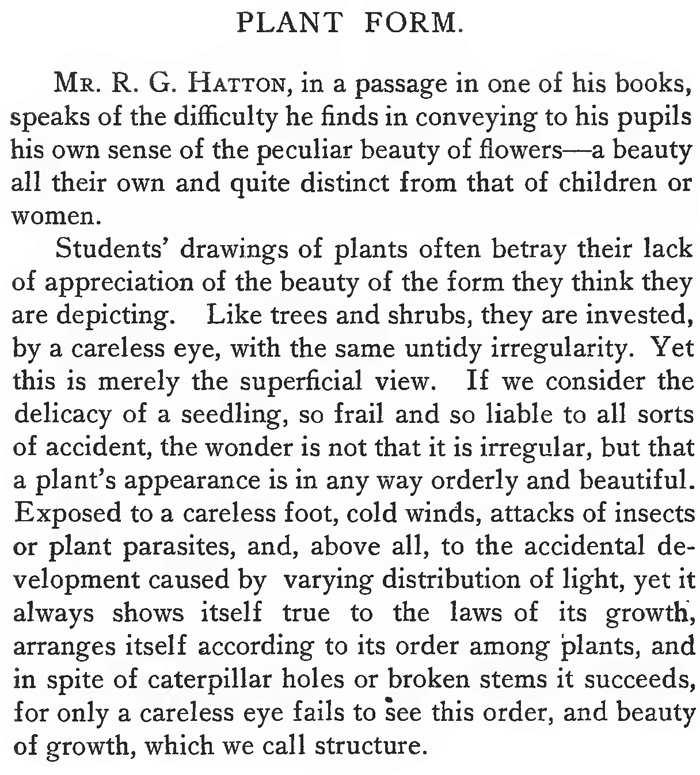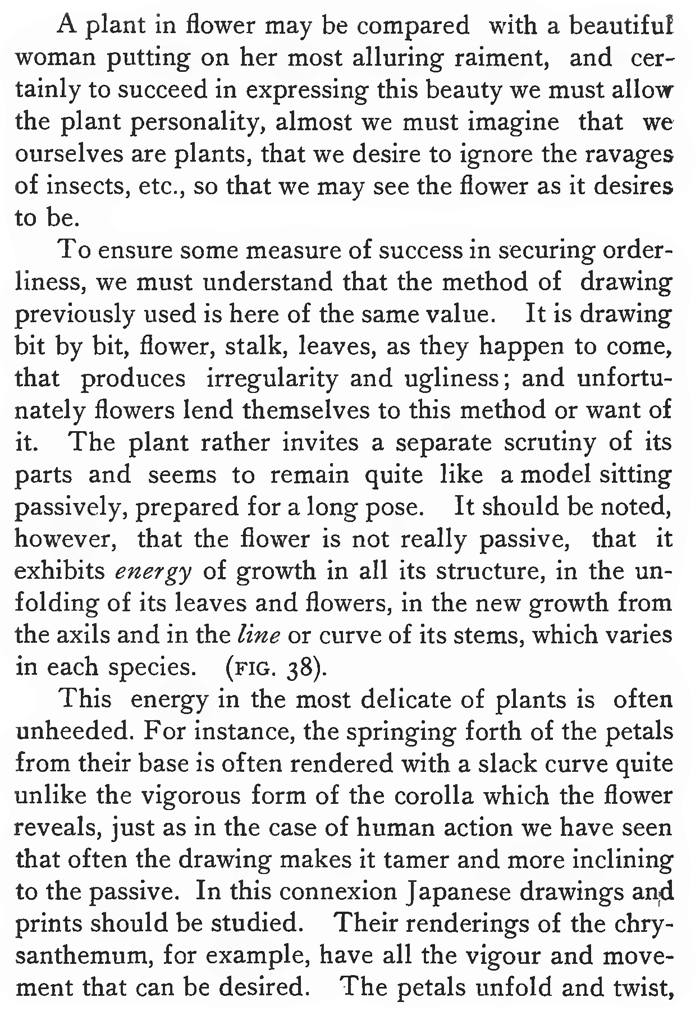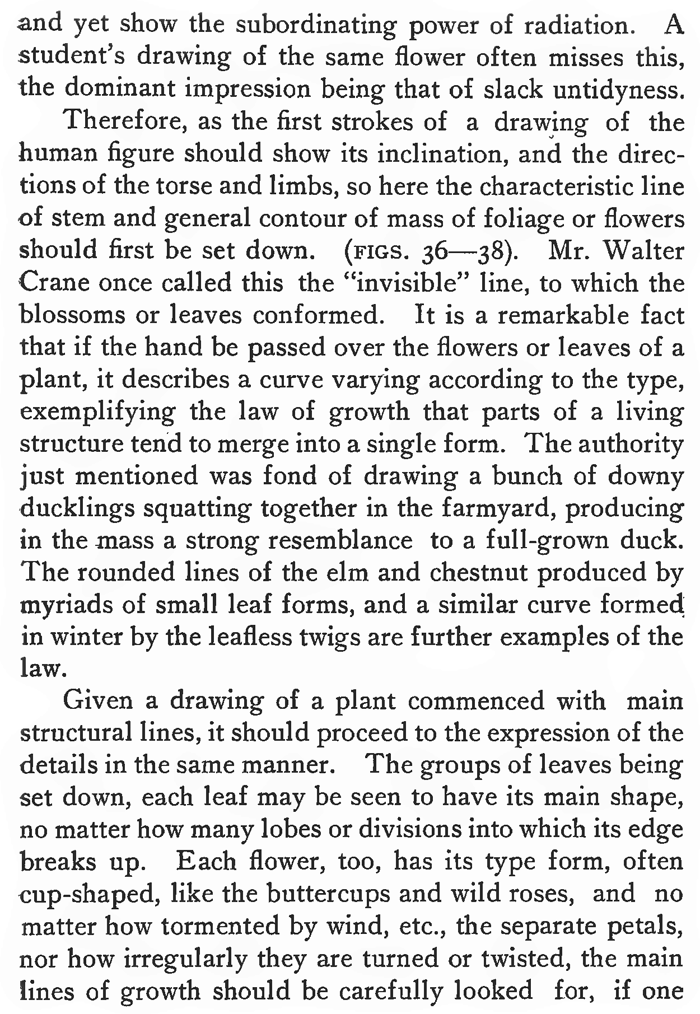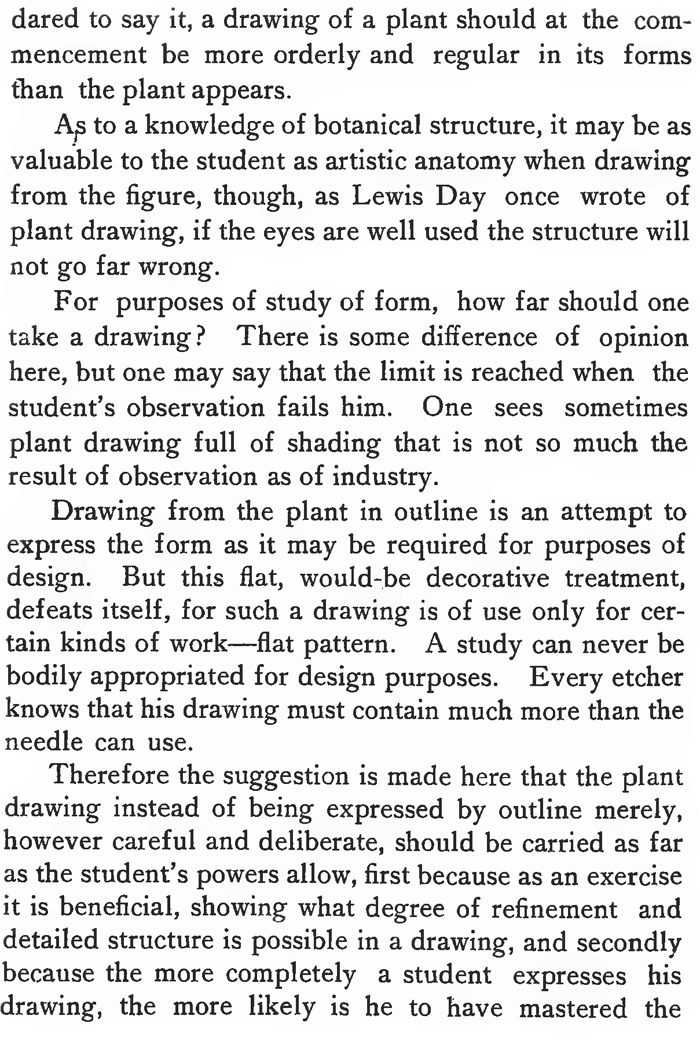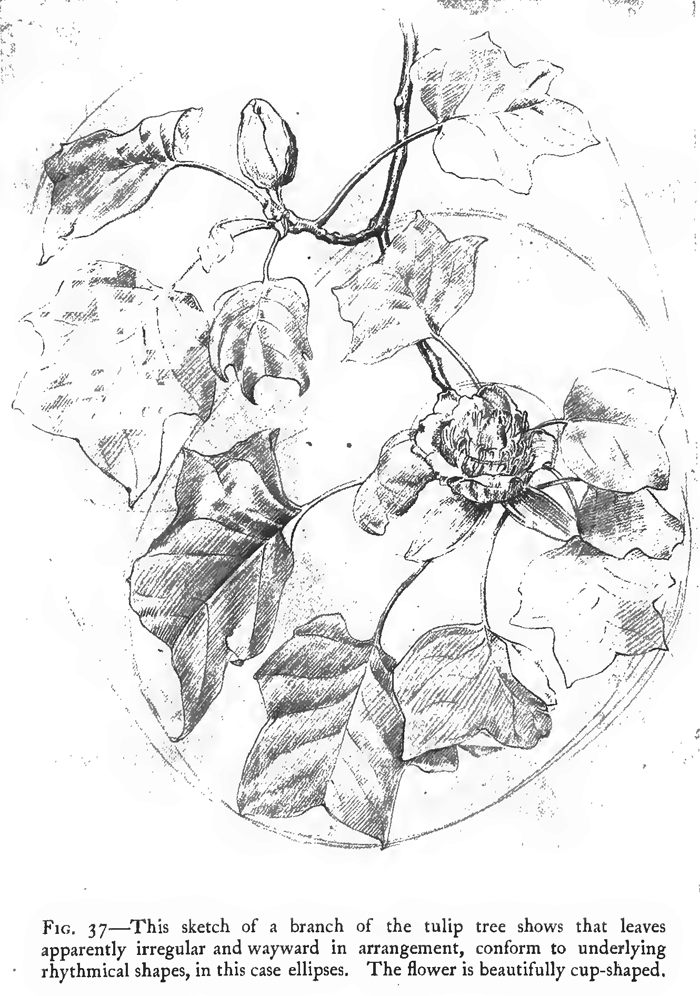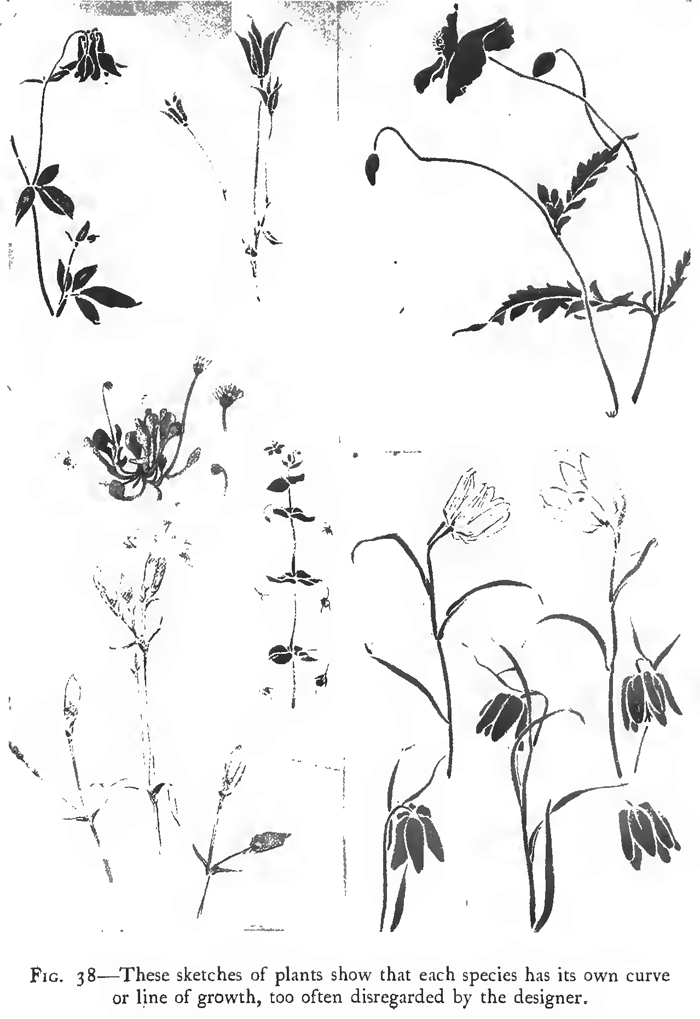Home > Directory of Drawing Lessons> Nature Drawing > Drawing Flowers > Tips for Drawing Plants and Flowers
A Drawing Lesson in Drawing Plants and Flowers
|
|
DRAWING FLOWERS AND OTHER PLANTS & THEIR FORMSMr. R.G. Hatton, in a passage in one of his books, speaks of the difficulty he finds in conveying to his pupils his own sense of the peculiar beauty of flowers—a beauty all their own and quite distinct from that of children or women. Students' drawings of plants often betray their lack of appreciation of the beauty of the form they think they are depicting. Like trees and shrubs, they are invested, by a careless eye, with the same untidy irregularity. Yet this is merely the superficial view. If we consider the delicacy of a seedling, so frail and so liable to all sorts of accident, the wonder is not that it is irregular, but that a plant's appearance is in any way orderly and beautiful. Exposed to a careless foot, cold winds, attacks of insects or plant parasites, and, above all, to the accidental development caused by varying distribution of light, yet it always shows itself true to the laws of its growth, arranges itself according to its order among plants, and in spite of caterpillar holes or broken stems it succeeds, for only a careless eye fails to see this order, and beauty of growth, which we call structure. A plant in flower may be compared with a beautiful woman putting on her most alluring raiment, and certainly to succeed in expressing this beauty we must allow the plant personality, almost we must imagine that we ourselves are plants, that we desire to ignore the ravages of insects, etc., so that we may see the flower as it desires to be. To ensure some measure of success in securing orderliness, we must understand that the method of drawing previously used is here of the same value. It is drawing bit by bit, flower, stalk, leaves, as they happen to come, that produces irregularity and ugliness ; and unfortunately flowers lend themselves to this method or want of it. The plant rather invites a separate scrutiny of its parts and seems to remain quite like a model sitting passively, prepared for a long pose. It should be noted, however, that the flower is not really passive, that it exhibits energy of growth in all its structure, in the unfolding of its leaves and flowers, in the new growth from the axils and in the line or curve of its stems, which varies in each species. (FIG. 38). This energy in the most delicate of plants is often unheeded. For instance, the springing forth of the petals from their base is often rendered with a slack curve quite unlike the vigorous form of the corolla which the flower reveals, just as in the case of human action we have seen that often the drawing makes it tamer and more inclining to the passive. In this connection Japanese drawings and prints should be studied. Their renderings of the chrysanthemum, for example, have all the vigor and movement that can be desired. The petals unfold and twist, and yet show the subordinating power of radiation. A student's drawing of the same flower often misses this, the dominant impression being that of slack untidy-ness. Therefore, as the first strokes of a drawing of the human figure should show its inclination, and the directions of the torso and limbs, so here the characteristic line of stem and general contour of mass of foliage or flowers should first be set down. (FIGS. 36-38). Mr. Walter Crane once called this the "invisible" line, to which the blossoms or leaves conformed. It is a remarkable fact that if the hand be passed over the flowers or leaves of a plant, it describes a curve varying according to the type, exemplifying the law of growth that parts of a living structure tend to merge into a single form. The authority just mentioned was fond of drawing a bunch of downy ducklings squatting together in the farmyard, producing in the mass a strong resemblance to a full-grown duck. The rounded lines of the elm and chestnut produced by myriads of small leaf forms, and a similar curve formed in winter by the leafless twigs are further examples of the law. Given a drawing of a plant commenced with main structural lines, it should proceed to the expression of the details in the same manner. The groups of leaves being set down, each leaf may be seen to have its main shape, no matter how many lobes or divisions into which its edge breaks up. Each flower, too, has its type form, often cup-shaped, like the buttercups and wild roses, and no matter how tormented by wind, etc., the separate petals, nor how irregularly they are turned or twisted, the main lines of growth should be carefully looked for, if one dared to say it, a drawing of a plant should at the commencement be more orderly and regular in its forms than the plant appears. Ap to a knowledge of botanical structure, it may be as valuable to the student as artistic anatomy when drawing from the figure, though, as Lewis Day once wrote of plant drawing, if the eyes are well used the structure will not go far wrong. For purposes of study of form, how far should one take a drawing ? There is some difference of opinion here, but one may say that the limit is reached when the student's observation fails him. One sees sometimes plant drawing full of shading that is not so much the result of observation as of industry. Drawing from the plant in outline is an attempt to express the form as it may be required for purposes of design. But this flat, would-be decorative treatment, def eats itself, for such a drawing is of use only for certain kinds of work—flat pattern. A study can never be bodily appropriated for design purposes. Every etcher knows that his drawing must contain much more than the needle can use. Therefore the suggestion is made here that the plant drawing instead of being expressed by outline merely, however careful and deliberate, should be carried as far as the student's powers allow, first because as an exercise it is beneficial, showing what degree of refinement and detailed structure is possible in a drawing, and secondly because the more completely a student expresses his drawing, the more likely is he to have mastered the structure of the plant, and the more useful will the drawing be for reference. FIG. 37—This sketch of a branch of the tulip tree shows that leaves apparently irregular and wayward in arrangement, conform to underlying rhythmical shapes, in this case ellipses. The flower is beautifully cup-shaped. FIG. 38—These sketches of plants show that each species has its own curve
or line of growth, too often disregarded by the designer. To take one principle, that of radiation, as an instance, it will be noted how the lines of the plant seem consciously, as it were, to obey this law, which is clearly seen in the arrangement of the stems, flowers, leaves, etc. The structure takes cognizance of all the principles, but the plant seems to acknowledge radiation as its first law of beauty in form. Speaking generally the student of plant form is apt to produce snippets of detail rather than a carefully composed rendering. Without taking liberties with the plant the space at one's disposal and the arrangement of the forms on the page should be carefully considered. Every drawing should be an exercise in composition. |
Privacy Policy .... Contact Us





